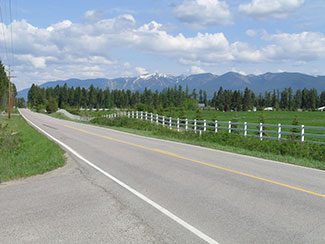
Maintaining safety on the highway system has been a top priority for most highway agencies in the U.S. given the heavy toll in deaths and casualties associated with traffic crashes. The limited funds available to highway agencies for safety improvements require a careful consideration of sites that are more promising in improving safety at the network level. Therefore, highway agencies systemically screen the network to identify those sites that are expected to yield greater safety benefits, thus deserving more consideration for safety improvement funds. While this process has been successfully implemented by many agencies for urban and well-traveled major rural highways, it may prove difficult on rural low-volume roads including local county roads. The low traffic exposure on these roads and consequently the low number of crashes occurring may preclude the possibility of using crash data alone in identifying and ranking candidate sites for safety improvement projects. The proposed research will attempt to address this issue by providing much-needed guidance on how to systemically screen the network and rank sites on low-volume roads that are most deserving of safety improvements funds.
Reports
Final Report
Final Presentation
Project Summary Report
Implementation Report
Poster
